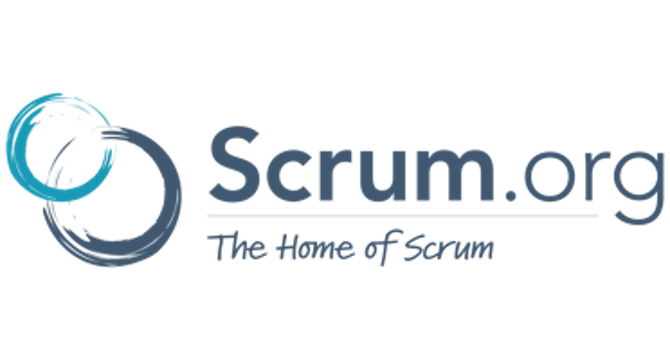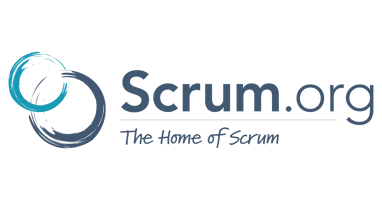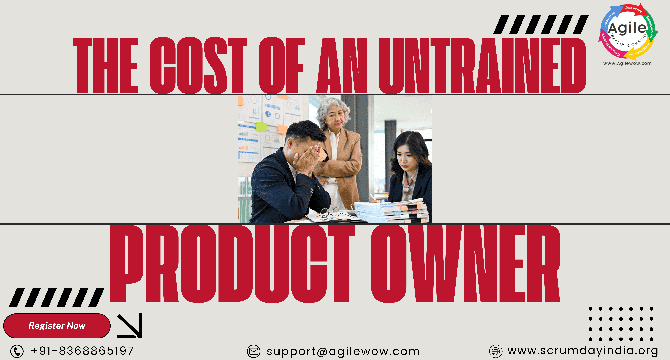Agile Methodology News
Medium
341

Image Credit: Medium
Why Cutting Agile Leadership Hurts Teams More Than It Saves
- Many organizations are cutting the Agile leadership role to save costs by distributing its responsibilities among team members, but this move can have negative impacts on team dynamics and long-term effectiveness.
- Maintaining Agile leadership as a distinct role has proven to be more beneficial than the savings derived from eliminating it, as evidenced by the experience of one company.
- Roles like Agile Delivery Manager have emerged to encompass a broader range of responsibilities beyond traditional Scrum Master roles, incorporating value stream management and flow engineering.
- Eliminating dedicated Agile leadership can lead to increased cognitive load for Product and Engineering Managers, reduced team alignment, and breakdowns in Agile practices and team culture.
- The role of Agile Delivery Manager is essential for providing a holistic view of the system, ensuring balanced flow distribution, and facilitating healthy delivery over time.
- Agile leaders play a critical role in enabling self-managing teams, continuous improvement, and long-term value delivery, evolving to focus more on strategic optimization as teams mature.
- While some high-performing teams can self-manage without dedicated Agile leadership, the absence of a system-level enabler for delivery efficiency and value optimization can be felt in many organizations.
- Experimenting with shared responsibilities versus maintaining a dedicated Agile leadership role is a decision that varies based on organizational needs, team maturity, and culture.
- Overloading Product and Engineering Managers with additional Agile leadership responsibilities may create challenges in maintaining delivery balance and sustained attention to team health.
- The industry struggles to fill roles with strong candidates when one person is tasked with multiple responsibilities, leading to what is called the 'unicorn problem.'
- Before eliminating the Agile leadership role, organizations should consider who will prioritize delivery balance across various aspects like features, tech debt, security, and defects, as this responsibility is crucial for successful outcomes.
Read Full Article
20 Likes
Medium
115

Image Credit: Medium
The Product Approach Through the Fender Telecaster
- In the 1940s, Leo Fender observed issues with existing electric guitars and aimed to design a simple, durable instrument, leading to the creation of the Fender Esquire in 1950.
- The Esquire's initial version faced criticism, lacking a truss rod in the neck and having only one pickup, which led to valuable improvements based on user feedback.
- By quickly adapting to feedback, Fender introduced the Fender Broadcaster in 1950, although had to rename it due to copyright issues, resulting in the birth of the Fender Telecaster in 1951.
- The Telecaster's success was attributed to its durability, ease of production, and unique sound quality, appealing to country, rock, and blues musicians.
- Fender's emphasis on mass production contributed significantly to the Telecaster's success, allowing for consistent quality and meeting growing market demand.
- The story of the Fender Telecaster exemplifies product development principles such as continuous learning, user-centric design, rapid iteration, and adaptability to unforeseen challenges.
- Fender's adaptive approach to product management resonates with modern concepts like outcome-driven product management and rapid prototyping in Agile development.
- The Telecaster's legacy showcases the importance of scalable design and production, emphasizing the need for products to evolve with users and market dynamics.
- Lessons from the Fender Telecaster's success extend beyond guitar design, offering insights for modern product managers on iterative innovation and user-centric development.
- The Telecaster's journey reinforces the idea that successful products are built through continuous improvement, user feedback, and adaptability, rather than seeking perfection from the start.
Read Full Article
6 Likes
Scrum
377

Image Credit: Scrum
Scrum Would Never Work for Us Here… Or Would It?
- Many teams resist Scrum due to misconceptions or a resistance to change, but it can be powerful for product delivery when implemented correctly.
- Common issues with Scrum implementation include the inability to prioritize, lack of goal-setting understanding, and trust issues within the team.
- Scrum addresses challenges through goal-setting, emphasizing the importance of Product and Sprint Goals as a team's North Star.
- Goals provide focus, track progress, and align stakeholders around a common purpose, essential for effective product delivery.
- Start with defining the 'why' (goal) before the 'what' (backlog items) to avoid confusion and ensure alignment and efficiency.
- Effective goal-setting in Scrum is a collaborative process involving the whole team and stakeholders to foster ownership and accountability.
- Strategies like shortening timeboxes and broadening goals can help teams manage multiple objectives and stay focused and productive.
- Trust and focus are key elements in making Scrum work, allowing teams to feel empowered, achieve consistent results, and concentrate on their goals.
- Scrum is not just about processes but about people, fostering higher morale, productivity, and alignment with user needs over time.
- When implemented correctly, focusing on collaboration, goal-setting, and trust, Scrum can significantly benefit product delivery teams.
Read Full Article
22 Likes
Kanbanzone
22

Image Credit: Kanbanzone
Can You Run a Business Without Meetings? The Kanban-First Approach
- Businesses are exploring alternative approaches to communication, such as Kanban, to reduce time wasted in meetings and improve workflow efficiency.
- The Kanban system aims to boost productivity, limit multitasking, and visualize work progress without the need for frequent meetings.
- Tasks are visually managed on Kanban boards, eliminating the necessity for status meetings and promoting self-updates and issue resolution.
- Reducing meetings enhances productivity, decision-making speed, and employee satisfaction by allowing teams to focus on meaningful work.
- Kanban benefits industries like software development, marketing, customer support, and healthcare by streamlining workflows and reducing unnecessary discussions.
- Implementing a Kanban-first model involves setting up boards, defining task categories, assigning ownership, limiting work in progress, and using comments for communication.
- Transitioning to Kanban can lead to reduced meeting time, faster decision-making, better task prioritization, and improved collaboration within remote teams.
- Successful companies have thrived without meetings by utilizing Kanban for task management, clear communication, and uninterrupted workflow.
- While occasional discussions may still be necessary, Kanban implementation can significantly boost productivity and create a more focused work environment.
- Kanban promotes visual task management, clear prioritization, asynchronous communication, and automated workflows to enhance work efficiency and reduce the need for meetings.
Read Full Article
1 Like
Discover more
- Programming News
- Software News
- Web Design
- Devops News
- Open Source News
- Databases
- Cloud News
- Product Management News
- Operating Systems News
- Computer Engineering
- Startup News
- Cryptocurrency News
- Technology News
- Blockchain News
- Data Science News
- AR News
- Apple News
- Cyber Security News
- Leadership News
- Gaming News
- Automobiles News
Scrum-Master-Toolbox
275

Karen Suarez: Decision Authority, The Make-or-Break Factor for Product Owners
- Exemplary Product Owners have a clear, compelling vision that motivates the team.
- Two common anti-patterns in the Product Owner role: proxy for committee decisions and uncontrollable backlog.
- Global Agile Summit 2025 in Tallinn, Estonia, offers real-world Agile success stories.
- Karen Suarez is an experienced Scrum Master passionate about agile practices and organizational innovation.
Read Full Article
16 Likes
Medium
382

Image Credit: Medium
Revolutionizing Product Management with Model-Centric Product (MCP)AI
- MCP AI (Model-Centric Product AI) revolutionizes product management by integrating AI models as a central component of product functionality.
- MCP AI focuses on placing the model at the core of the product lifecycle, driving value in personalization, automation, forecasting, and user engagement.
- The architecture of MCP AI includes real-time data ingestion, a feature store, model serving layer, and a feedback loop for continuous learning and improvement.
- MCP AI enables product managers to make smarter, more intuitive product decisions, run A/B tests with AI-generated variations, deliver personalized experiences, and automate internal workflows.
Read Full Article
22 Likes
Scrum
191

Image Credit: Scrum
AI and Agile - Foe or Friend?
- Traditional project management methods struggle with AI due to uncertainty, complexity, and inflexibility.
- AI projects have iterative and experimental nature, making fixed planning difficult.
- Traditional methods limit scope and hinder adaptability in AI projects.
- Agile methodologies support AI initiatives through adaptability, experimentation, and continuous learning.
Read Full Article
11 Likes
Scrum
400

Image Credit: Scrum
Scrum Is Simple… So Why Is It So Hard?
- Scrum is often perceived as simple, but many teams struggle with it and organizations feel it doesn't meet their expectations.
- Scrum is easy to understand and follow, with clear definitions of values, accountabilities, events, and artifacts.
- However, being effective with Scrum goes beyond the mechanics and requires embracing principles like empiricism, lean thinking, and Scrum values.
- Effective Scrum depends on active collaboration, possessing necessary skills, fostering psychological safety, and maintaining focused and productive Scrum events.
Read Full Article
24 Likes
UX Design
262

Image Credit: UX Design
Test smart: how to deal with biases around testing?
- Testing biases in the tech industry can lead to undervaluation and underpayment of testing professionals, who are sometimes seen merely as 'bug detectors' or 'regression tests maintainers.'
- In agile teams, testers have a broader role beyond just applying testing techniques, including analyzing user stories, reviewing prototypes, scripting test cases, and more.
- Challenges like the cult of automation, prioritizing tools over testing strategy, and inappropriate professional labeling affect modern testers.
- Automation efforts may not always solve quality issues entirely, require significant maintenance, and may not be suitable for all types of testing.
- Praising tools without a clear testing strategy can be counterproductive, highlighting the importance of strategic planning in testing processes.
- The use of labels like 'manual' or 'automated' to categorize testers can oversimplify their roles and contribute to misunderstandings about the complexity of testing.
- Testing is a human-driven activity, and debates around manual versus automated testing may not capture the essence of the profession accurately.
- Testers need to advocate for a more holistic approach to testing, share knowledge about their profession, and challenge misconceptions within the tech community.
- Applying automation strategically, developing a cohesive testing strategy, and being mindful of professional labels are essential steps for enhancing the testing profession.
- To improve the perception and value of testing, testers should communicate more openly, address biases, and strive for recognition of the complexity of their roles.
Read Full Article
15 Likes
Scrum
142

Image Credit: Scrum
AI Alerts Can Save a Life—Could It Save Yours Too?
- AI has the ability to learn, adapt, and think like humans, making it a powerful technology revolution.
- With the help of AI, machines can now analyze health records, detect anomalies, and issue early warnings, potentially saving lives.
- AI is not replacing doctors, but rather enhancing their abilities by predicting risks before they become life-threatening.
- To benefit from AI in healthcare, individuals are advised to turn on alerts on AI-powered health devices, pay attention to AI-driven health recommendations, and not wait for symptoms to show up.
Read Full Article
8 Likes
Scrum
164

Image Credit: Scrum
Product Market Fit and Evidence Based Management, the perfect pair
- The Product Owner is responsible for maximizing the value of the product developed by the Scrum Team.
- Product Market Fit, a concept introduced by Marc Anderseen, ensures a product is in a good market and meets market needs.
- Dan Olsen's Product Market Fit pyramid includes components like target customer, underserved needs, value proposition, feature set, and user experience.
- To achieve Product Market Fit, the Product Owner must focus on understanding target customers, their needs, and creating a unique value proposition.
- Evidence Based Management (EBM) helps measure the value created by the product through intentional experimentation and feedback.
- EBM focuses on four key value areas: Unrealized Value, Current Value, Ability to Innovate, and Time-to-Market.
- EBM and Product Market Fit complement each other in evaluating whether a product is meeting market needs and creating value.
- The Key Value Areas of EBM can be applied to understand target customers, underserved needs, value proposition, feature set, and user experience.
- Product Market Fit and EBM are essential tools for Product Owners to ensure their product meets market needs and delivers value to customers.
- To delve deeper into these concepts, exploring resources like Dan Olsen's 'Lean Product Playbook' and Scrum.org's 'Evidence Based Management guide' is recommended.
Read Full Article
9 Likes
Scrum-Master-Toolbox
231

Karen Suarez: Beyond Process Compliance, True Indicators of Agile Team Maturity
- Scrum Master Karen Suarez focuses on indicators of true agile team maturity, such as the team's ability to address tough topics, resolve conflicts, and suggest solutions.
- She aims to help the team become self-organized and autonomous, where they no longer rely on her guidance.
- Karen prefers simple retrospective formats like Start/Stop/Continue to encourage meaningful dialogue and address critical issues.
- She emphasizes the importance of creating psychological safety for team members to comfortably address conflicts and difficult conversations.
Read Full Article
13 Likes
Medium
6.7k

Image Credit: Medium
The Future of Agile: How AI is Transforming Agile
- AI seamlessly integrates into Agile environments by automating repetitive tasks, providing predictive insights, and improving team efficiency.
- Key areas where AI is making an impact include reducing time spent on manual reporting, improving decision-making, and making data-driven decisions.
- Challenges of AI in Agile must be addressed by combining AI-driven insights with human expertise, ensuring technology enhances Agile principles.
- By strategically integrating AI into Agile methodologies, businesses can remain competitive, drive innovation, and unlock new levels of agility.
Read Full Article
14 Likes
Scrum
28

Image Credit: Scrum
AI-Powered Disruption: Turning Hidden Data into Market Opportunity
- AI-powered disruption is about reshaping industries, creating new market segments, and turning untapped data into a competitive advantage.
- AI can transform existing data into new revenue streams, cost savings, and new market opportunities.
- Real-world examples of AI-driven disruption: Amazon's predictive shopping, GE's predictive maintenance, and JPMorgan's AI-powered loan processing.
- To get started with AI, businesses should identify hidden insights, start with a focused AI pilot, leverage AI tools and talent, create a culture of experimentation, and measure and scale the successful pilots.
Read Full Article
1 Like
Scrum
124

Image Credit: Scrum
The Cost of an Untrained Product Owner: Why PO Training is a Must
- Investing in Product Owner training is essential to avoid the costs of an untrained Product Owner.
- The cost of poor backlog management includes wasted effort and delays.
- Misaligned stakeholders lead to building what stakeholders demand rather than what customers need.
- Missed market opportunities occur when the product strategy is not aligned with customer needs and market trends.
Read Full Article
7 Likes
For uninterrupted reading, download the app